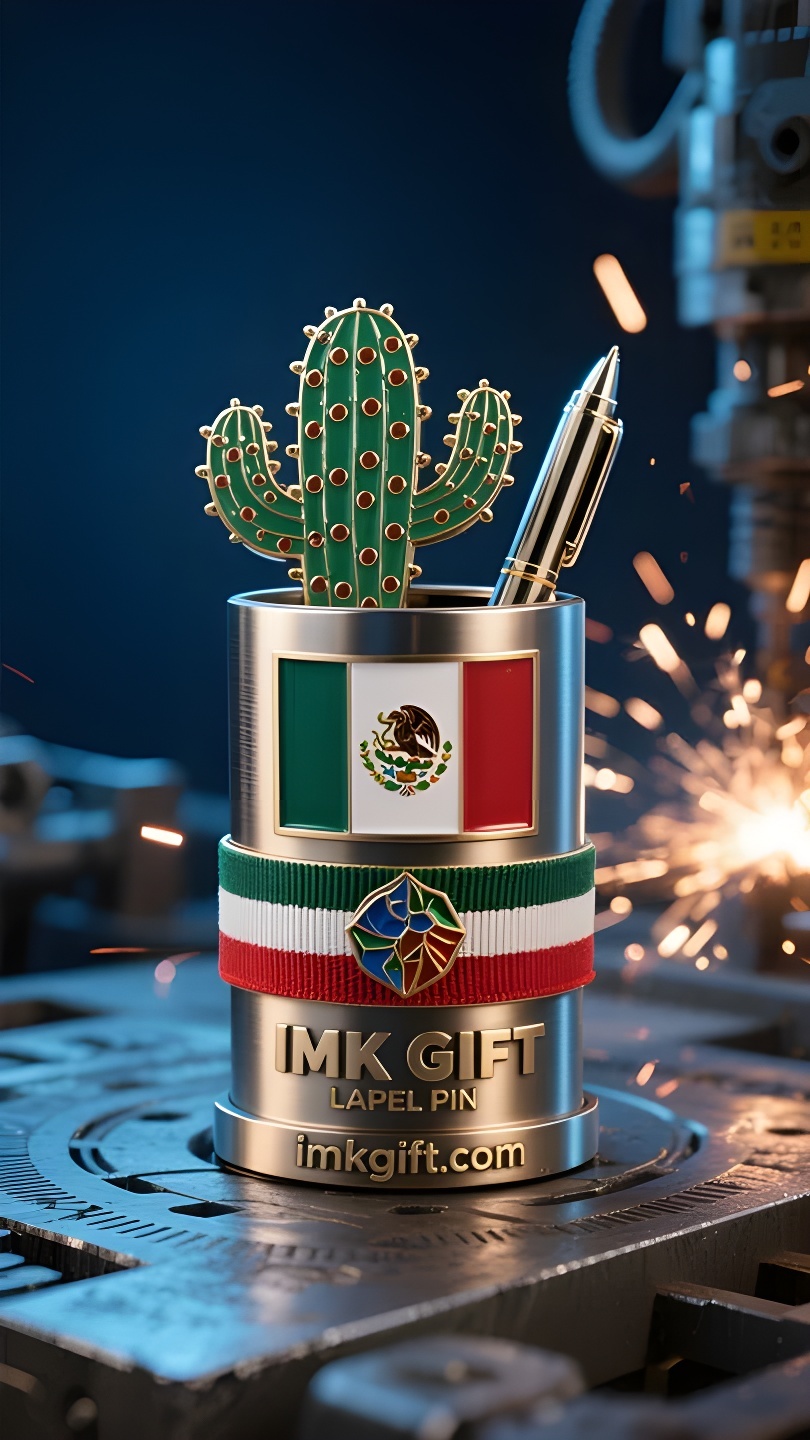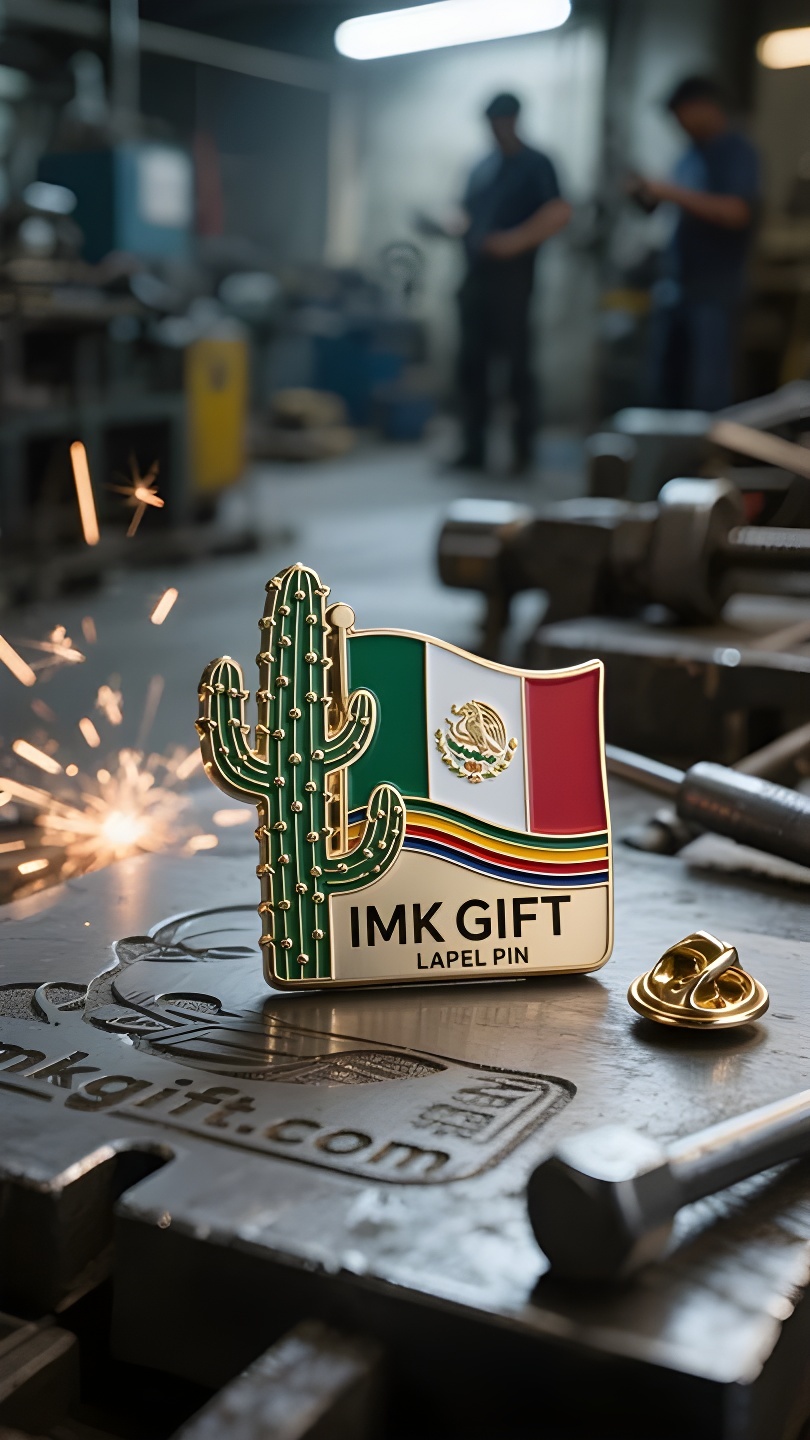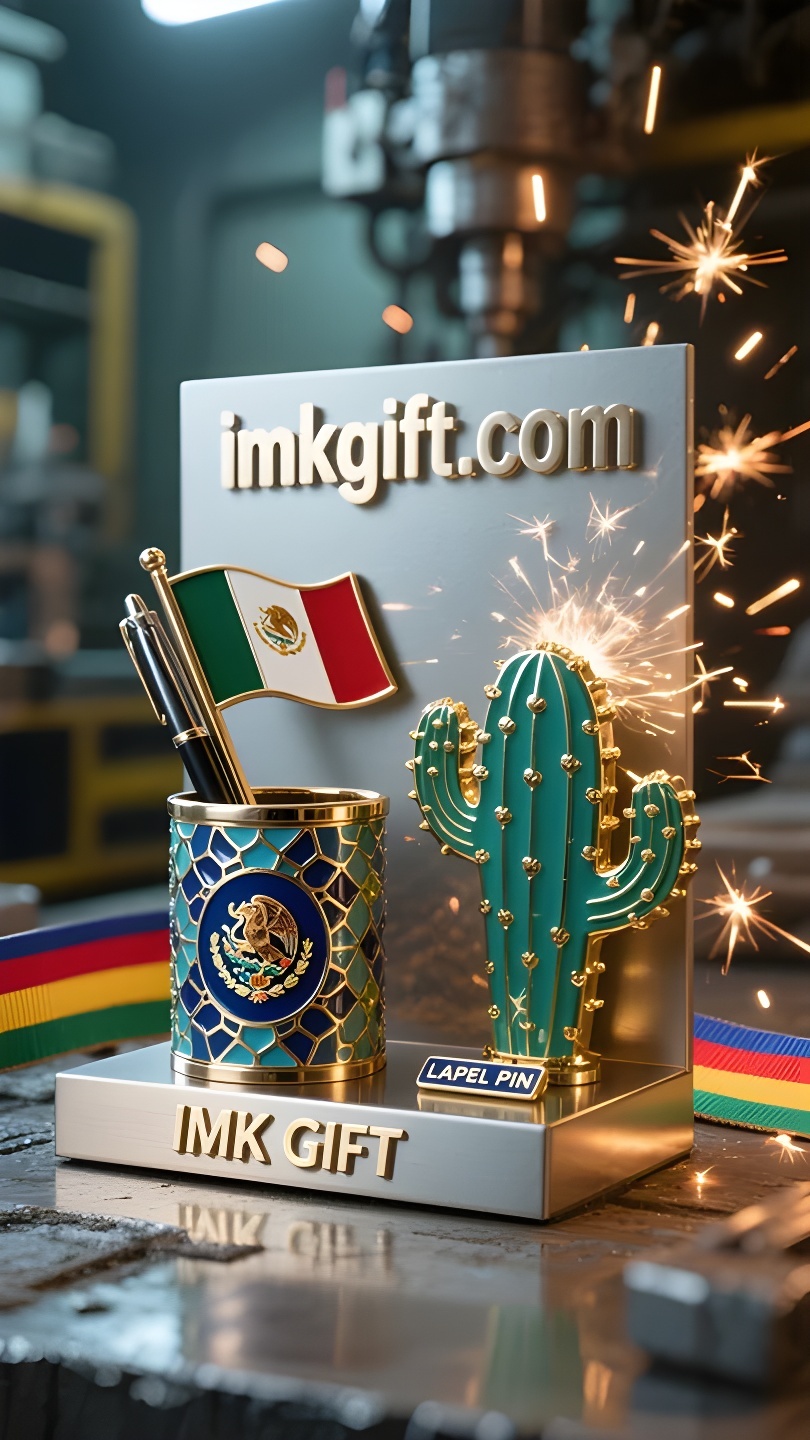in981-La-columna-vertebral-de-la-nación-en-el-porta-bolígrafos-de-cactus
▼
En la luz matutina del Día de la Independencia de México (16 de septiembre), la bandera nacional verde, blanca y roja ondea al viento. En el emblema nacional central, un águila se yergue orgullosa sobre un cactus, sosteniendo una serpiente en su boca y mirando hacia arriba, lo que representa el epítome del espíritu inquebrantable de 500 años de la nación. Y esta tenacidad se condensa ahora en un pequeño portaplumas con forma de cactus, que narra al mundo el poder de la vida. El diseño del portaplumas con forma de cactus se inspiró en la leyenda azteca: los dioses guiaron a su pueblo para encontrar el lugar del águila en el cactus y fundar una ciudad-estado. Esta planta no necesita tierra fértil, sino que puede mantenerse erguida con solo arena y el sol abrasador, al igual que las raíces culturales a las que el pueblo mexicano siempre se ha adherido durante la colonización y el cambio. Las espinas afiladas en la superficie del portaplumas no buscan alejar a la gente, sino recordarle al escritor: el verdadero crecimiento debe ir acompañado de dolor. Cada espina es como un desafío en el largo río de la historia, protegiendo el tallo que almacena agua en su centro: esa es la fuente de la sabiduría y el núcleo de la vida que aún puede nutrir la creatividad en la adversidad. Cuando la pluma estilográfica toca el borde del portaplumas, es como tocar un pergamino antiguo en el que los ancestros escribieron epopeyas con jugo de cactus. Los mexicanos de hoy incorporan este significado a su vida cotidiana: el portaplumas no es solo un contenedor de papelería, sino también un tótem que inspira a la nueva generación a cultivar sus ideales en una realidad árida. Le dice al mundo: la verdadera columna vertebral nunca necesita un invernadero; la luz más deslumbrante a menudo nace en el desierto más caluroso.
In the morning light of Mexico’s Independence Day (September 16), the green, white and red national flag spreads in the wind. On the central national emblem, an eagle stands proudly on the top of a cactus, holding a snake in its mouth and looking up, which is the epitome of the nation’s 500-year-old unyielding spirit. And this tenacity is now condensed in a small cactus-shaped pen holder, telling the world about the power of life. The design inspiration of the cactus pen holder comes from the Aztec legend: the gods guided their people to find the place of the eagle on the cactus and establish a city-state. This plant does not need fertile soil, but can stand upright with only sand and the scorching sun, just like the cultural roots that the Mexican people have always adhered to during colonization and change. The sharp thorns on the surface of the pen holder are not to keep people away, but to remind the writer: true growth must be accompanied by pain. Each thorn is like a challenge in the long river of history, protecting the stem that stores water in the center – that is the source of wisdom and the core of life that can still nourish creativity in adversity. When the fountain pen touches the edge of the pen holder, it is as if touching an ancient scroll on which the ancestors wrote epics with cactus juice. Today’s Mexicans incorporate this meaning into their daily lives: the pen holder is not only a stationery container, but also a totem that inspires the new generation to cultivate their ideals in a barren reality. It tells the world: the real backbone never needs a greenhouse; the most dazzling light is often born in the hottest desert.
在墨西哥独立日(9月16日)的晨曦中,绿白红三色国旗随风舒展。中央国徽上,雄鹰傲立于仙人掌之巅,衔蛇昂首的姿态,正是这个民族五百年不屈精神的缩影。而这份坚韧,如今正凝结在一方小小的仙人掌造型笔筒中,向世界诉说着生命的力量。
仙人掌笔筒的设计灵感源于阿兹特克传说:神明指引子民在仙人掌上发现雄鹰之地建立城邦。这种植物无需丰沃土壤,仅靠砂石与烈日便能挺立,恰如墨西哥人民在殖民与变革中始终坚守的文化根脉。笔筒表面的尖刺并非拒人千里,而是提醒执笔人:真正的成长必然伴随痛楚。每一根刺都像历史长河里的挑战,保护着中心蓄水的茎干——那是智慧的源泉,是逆境中依然能滋养创造力的生命内核。
当钢笔轻触笔筒边缘,仿佛触碰着先辈用仙人掌汁液书写史诗的古老卷轴。今日的墨西哥人将这份寓意融入日常:笔筒不仅是文具容器,更是激励新一代在贫瘠现实中开垦理想的图腾。它告诉世界:真正的脊梁,从不需要温室;最耀眼的光芒,往往诞生于最灼热的荒漠。
▼
Contact Us
📞 Tel: +0086-760-85286839
📧 Email: sales3@imkgift.com








